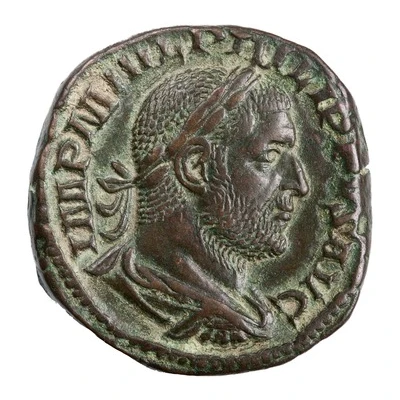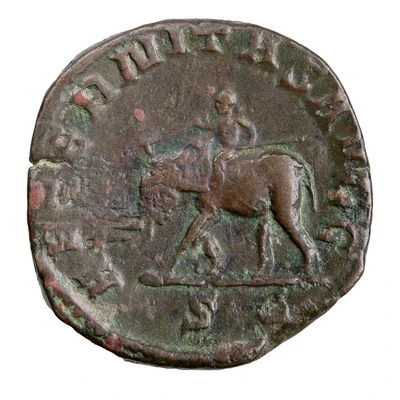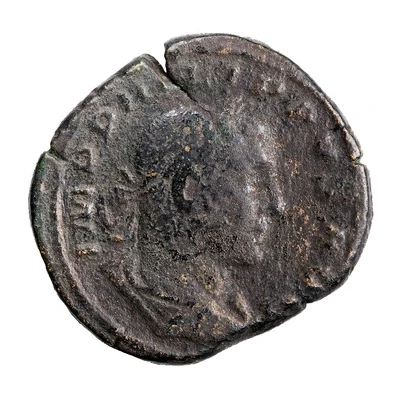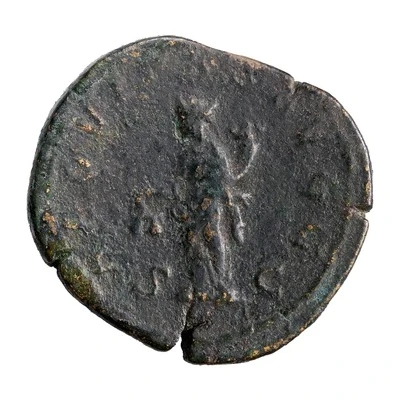


© American Numismatic Society (ANS)
Sestertius - Philippus I AETERNITATIS AVGG S C
| Bronze | 17.5 g | 28.5 mm |
| Issuer | Rome › Roman Empire (27 BC - 395 AD) |
|---|---|
| Emperor | Philip I (Marcus Iulius Philippus) (244-249) |
| Type | Standard circulation coin |
| Years | 244-249 |
| Value | Sestertius (⅛) |
| Currency | Antoninianus, Reform of Caracalla (AD 215 – 301) |
| Composition | Bronze |
| Weight | 17.5 g |
| Diameter | 28.5 mm |
| Shape | Round (irregular) |
| Technique | Hammered |
| Orientation | Variable alignment ↺ |
| Demonetized | Yes |
| Updated | 2024-10-05 |
| Numista | N#282291 |
|---|---|
| Rarity index | 97% |
Reverse
Elephant, guided by driver with goad and wand, walking left.
Script: Latin
Lettering: AETERNITATIS AVGG S C
Translation:
Aeternitas Duorum Augustorum. Senatus Consultum.
Eternity of the two emperors (Augusti). Decree of the senate.
Comment
Mass varies: 13.34–20.876 g;Diameter varies: 25.2–31 mm;
Example of this type:
American Numismatic Society (ANS)
Source:
Online Coins of the Roman Empire (OCRE)
Interesting fact
One interesting fact about this coin is that it features an image of Philippus I, also known as Philip the Arab, who was a Roman emperor who ruled from 244 to 249 AD. He was known for his attempts to restore peace and stability to the empire after a period of turmoil, and his coinage reflects this focus on stability and continuity. The coin's design, which includes an image of the emperor and various symbols of Roman power and authority, was meant to convey a sense of strength and unity to the people of the empire. Despite the challenges of his reign, Philippus I's coins remain a lasting legacy of his efforts to maintain the power and prestige of the Roman Empire.



